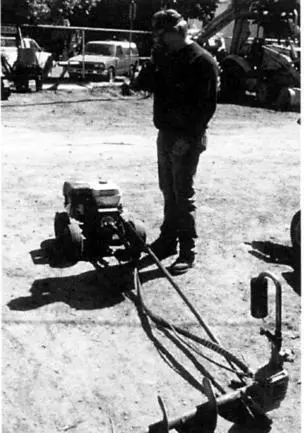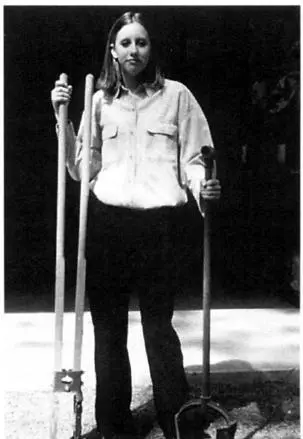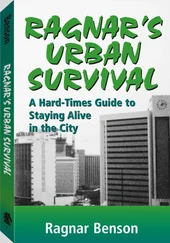Ragnar Benson - Ragnar's Urban Survival - A Hard-Times Guide to Staying Alive in the City
Здесь есть возможность читать онлайн «Ragnar Benson - Ragnar's Urban Survival - A Hard-Times Guide to Staying Alive in the City» весь текст электронной книги совершенно бесплатно (целиком полную версию без сокращений). В некоторых случаях можно слушать аудио, скачать через торрент в формате fb2 и присутствует краткое содержание. Год выпуска: 2009, ISBN: 2009, Жанр: Старинная литература, на английском языке. Описание произведения, (предисловие) а так же отзывы посетителей доступны на портале библиотеки ЛибКат.
- Название:Ragnar's Urban Survival: A Hard-Times Guide to Staying Alive in the City
- Автор:
- Жанр:
- Год:2009
- ISBN:1581600593
- Рейтинг книги:5 / 5. Голосов: 1
-
Избранное:Добавить в избранное
- Отзывы:
-
Ваша оценка:
- 100
- 1
- 2
- 3
- 4
- 5
Ragnar's Urban Survival: A Hard-Times Guide to Staying Alive in the City: краткое содержание, описание и аннотация
Предлагаем к чтению аннотацию, описание, краткое содержание или предисловие (зависит от того, что написал сам автор книги «Ragnar's Urban Survival: A Hard-Times Guide to Staying Alive in the City»). Если вы не нашли необходимую информацию о книге — напишите в комментариях, мы постараемся отыскать её.
Ragnar's Urban Survival: A Hard-Times Guide to Staying Alive in the City — читать онлайн бесплатно полную книгу (весь текст) целиком
Ниже представлен текст книги, разбитый по страницам. Система сохранения места последней прочитанной страницы, позволяет с удобством читать онлайн бесплатно книгу «Ragnar's Urban Survival: A Hard-Times Guide to Staying Alive in the City», без необходимости каждый раз заново искать на чём Вы остановились. Поставьте закладку, и сможете в любой момент перейти на страницу, на которой закончили чтение.
Интервал:
Закладка:
Almost all cache tubes are put underground, underwater, or under something. I especially like cache locations under roads. Blacktop and rural gravel roads are especially easy to dig for cache tubes.
During World War II, aluminum cache tubes hidden in salt water were ruined in as little as 4 months: they easily became crinkled, damaged, and leaky, most quickly losing their seal. Currently, cheap, easy-to-use cache tubes can be safely placed just about anywhere. I recently saw one that was kept in a fireplace wrapped in heavy reflective foil and rock wool.
Cache tubes can be made at home using SDR (sanitary drain, refuse) plastic pipe, available in virtually any full-service plumbing shop. In the 4-inch size, there is a heavyweight and lightweight grade. Six- and 8-inch tubing comes only in heavy and extra heavy grades. Because of price and portability, first-time cachers generally try to get by on 4-inch tubes. Eventually, everyone comes 'round to using 8-inch pipe.
An 8-inch cache tube 60 inches long will hold a real load of stuff! Eight-inch tubes hold at least two full-sized rifles, four assault rifles, four or five pistols, and several dozen magazines. These magazines can be loaded two-thirds full, or loose rounds can be dropped in as a kind of packing. Other previously mentioned items such as tents, road tarps, MREs, and flashlights might also go in the tubes, depending on one's circumstances. Some of these tubes get up around 200 pounds each when packed, perhaps arguing for smaller, more portable tubes. Smaller tubes are not generally considered because of their inability to hold some bulky rifles.
As an interesting aside, the French Resistance generally kept larger supplies of ammo and explosives cached separate from guns. Immediately before use, they were all brought together. It is lost in history exactly why. Perhaps it was part of their security plan.
Heavy duty, 4-inch SDR pipe retails for about $.95 per foot. Six-inch pipe costs about $1.55 per foot, and 8-inch-our most commonly used size-is still only about $4.15 per running foot.
End caps must be placed on the tubes. Cache tubes are virtually always buried vertically. This minimizes readings from modern metal detectors that can locate a 3/4-inch steel pipe 35 feet down in the ground!
Once buried vertically, cache tubes are impractical to dig up and use again. Bottom end caps are usually permanently sealed to the pipe with ABS cement. Plain, slip-type end caps for 4-inch pipe cost about $1.50 each. Six-inch caps are $7.00, and common 8inch slip caps cost a whopping $21.00 each. Top caps are simply slid onto the pipe; no cement is used. In place of ABS cement, use regular automotive grease. Properly done, a positive pressure builds inside the pipe when the cap is slipped on the tube, acting as a deterrent to moisture.
One more precaution before burying. Place a stout disk with a sound piece of nylon cord attached to it at the bottom of the tube. This allows the retrieval of small items that may fall to the bottom.

Heavy-duty commercial power augers that dig up to 12-inch holes 7 feet deep with add-on extensions are available from equipment rental shops.

Handtools used to place cache tubes.
To bury cache tubes, first purchase, borrow, or rent a 10-inch auger-type posthole digger. In times past, 12-inch hand-operated models were available that made this work easier, but these went with the dinosaurs and family farms. But, by slopping the auger around a bit, a 10-inch auger can be made to work with an 8inch tube. Renting a power unit that bores true 12-inch holes is also possible.
The big problem with either hand or power diggers is getting down a full 6 feet. Cache tubes must be placed no less than 1 foot underground to the top of the pipe.
Lengths of 3/4-inch steel pipe can be used to extend handoperated auger diggers. Most rental outfits have standard auger extensions they send along, allowing for much deeper holes when using their power augers. Boring one of these holes by hand is labor intensive and time consuming. At best, plan for one or two cache tube holes per afternoon.
Try to be clever about tube placement. For starters, never hide tubes in the septic system or sewer. It's the first place federal agents look! Inside cities attempt to place cache tubes as far from the retreat as practically possible. Every doubling of distance creates four times as much territory to examine. That's enough that if you haven't bragged about the cache's existence: authorities may be discouraged and give up on the project.
Cities are also full of cables, wires, buried junk, pipes, and other metal clutter. Near these obstructions are wonderful places to bury caches in contrast to the country, expert metal detector users claim.
But leaving cache tubes to revisit storage methods and philosophies, I am often asked how one can go about implementing a foolproof storage plan that won't leave big holes in one's storage inventory after it is too late to add more items. There is a plan that is something of a Golden Rule of Storage Accumulation, but it only works when there are at least 14 months remaining to crisis time. Survivors in Kosovo, for instance, could no longer make any use of this plan.
Start by working your way through your own basic Rule of Threes. For instance, what supplies are required to implement your own development of three energy, food, shelter, and water requirements? Carefully calculate all the tools and implements needed that can either be scrounged after commencement of the crisis or, more realistically, should be on hand before it hits.
In the instance of water, this might include five or six covered plastic buckets to carry water, five or six plastic tarps to collect water, a large supply of nylon rope with which to deploy the tarps, a wooden carrying rack for the buckets, plastic barrels, pipe, bleach, chemicals to make bleach, filter racks, sand, handpumps, well pipe, and whatever other specific items might be required to run a three-element water enterprise.
Do the same for food. Specific recommendations were covered in the food chapter. No need to list these again.
But what about livestock-keeping supplies, including cages, feed, water dishes, and sources of breeding stock? Some of these should be stockpiled now. What about guns and ammo to collect wild and semiwild game? Will traps and snares be required? Better plan for these as well.

The idea is not to turn your storage area into a survival supermarket, but rather to store items you know will be necessary, based on past experience.
Energy requirements are similar. Many of us rely on a pipe to bring natural gas into our homes, or on oil, firewood, or even heat pumps. Will there be generators to power freezers and some minimal heat and light? Should large LP gas tanks or diesel fuel tanks be purchased, buried, and filled? Some city survivors have as many as twelve or fifteen 55-gallon barrels of diesel fuel or gasoline tucked away in mini-storage units listed under an assumed name. Burning scrap wood is a fine plan for city survivors, but what about a stove or simple device in which to burn this wood? Are there sufficient matches to last a year or more?

Интервал:
Закладка:
Похожие книги на «Ragnar's Urban Survival: A Hard-Times Guide to Staying Alive in the City»
Представляем Вашему вниманию похожие книги на «Ragnar's Urban Survival: A Hard-Times Guide to Staying Alive in the City» списком для выбора. Мы отобрали схожую по названию и смыслу литературу в надежде предоставить читателям больше вариантов отыскать новые, интересные, ещё непрочитанные произведения.
Обсуждение, отзывы о книге «Ragnar's Urban Survival: A Hard-Times Guide to Staying Alive in the City» и просто собственные мнения читателей. Оставьте ваши комментарии, напишите, что Вы думаете о произведении, его смысле или главных героях. Укажите что конкретно понравилось, а что нет, и почему Вы так считаете.











